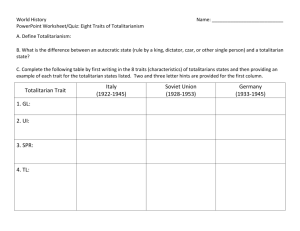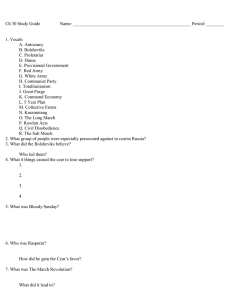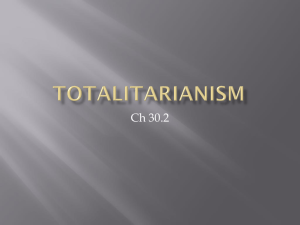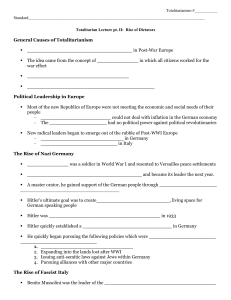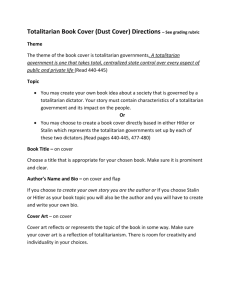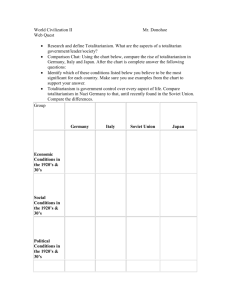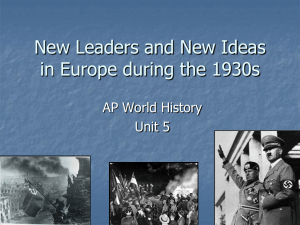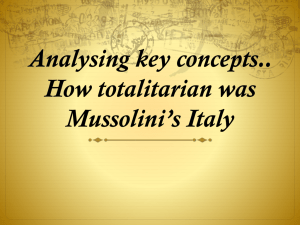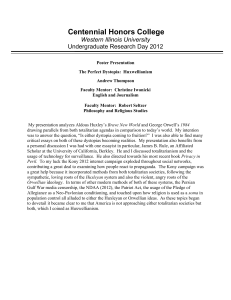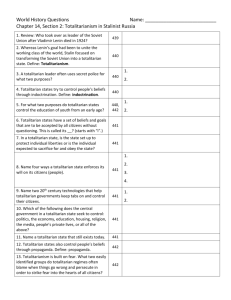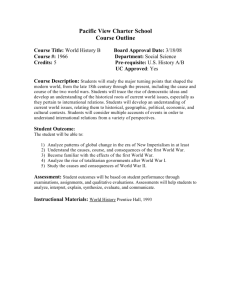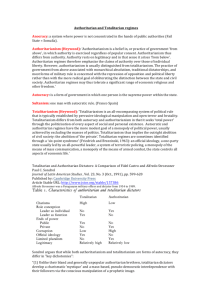Rise of Totalitarianism I. Totalitarianism Defined II. Totalitarianism
advertisement
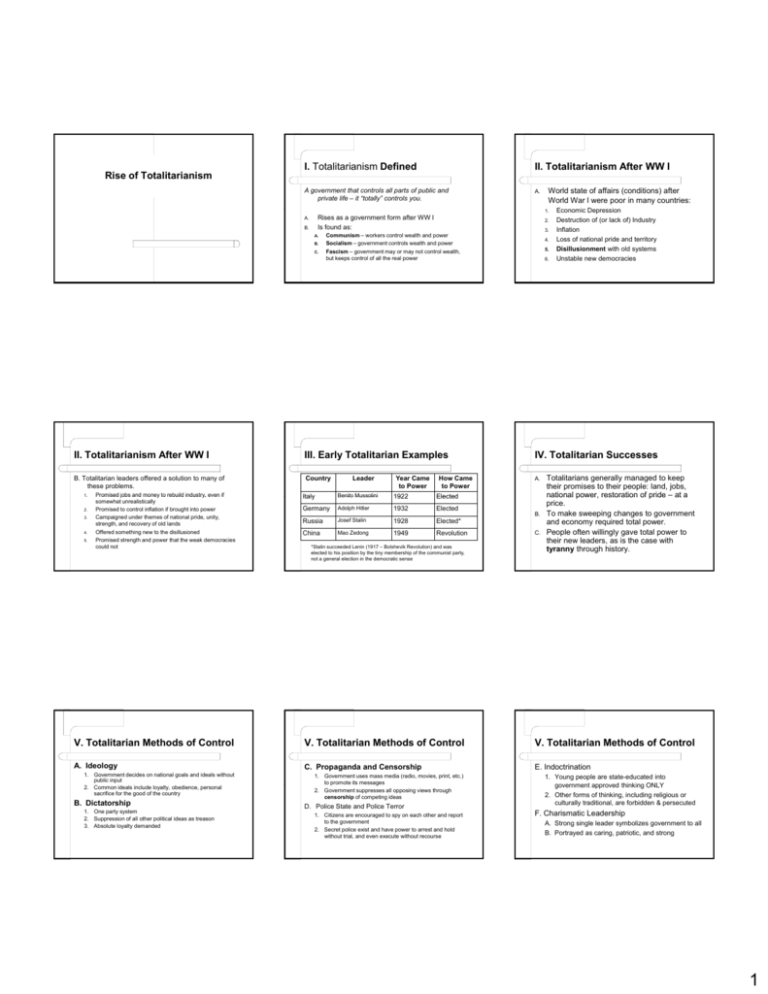
Rise of Totalitarianism I. Totalitarianism Defined II. Totalitarianism After WW I A government that controls all parts of public and private life – it “totally” controls you. A. World state of affairs (conditions) after World War I were poor in many countries: 1. Rises as a government form after WW I Is found as: A. B. A. B. C. 2. 3. Communism – workers control wealth and power Socialism – government controls wealth and power Fascism – government may or may not control wealth, but keeps control of all the real power 4. 5. 6. Economic E i D Depression i Destruction of (or lack of) Industry Inflation Loss of national pride and territory Disillusionment with old systems Unstable new democracies II. Totalitarianism After WW I III. Early Totalitarian Examples IV. Totalitarian Successes B. Totalitarian leaders offered a solution to many of these problems. Country A. 1. 2. 3. 4. 5. Promised jobs and money to rebuild industry, even if somewhat unrealistically Promised to control inflation if brought into power Campaigned under themes of national pride, unity, strength, and recovery of old lands Offered something new to the disillusioned Promised strength and power that the weak democracies could not Leader Year Came to Power How Came to Power Italy Benito Mussolini 1922 Germany Adolph Hitler 1932 Elected Russia Josef Stalin 1928 Elected* China Mao Zedong 1949 Revolution Elected *Stalin succeeded Lenin (1917 – Bolshevik Revolution) and was elected to his position by the tiny membership of the communist party, not a general election in the democratic sense B. C. Totalitarians generally managed to keep their promises to their people: land, jobs, national power power, restoration of pride – at a price. To make sweeping changes to government and economy required total power. People often willingly gave total power to their new leaders, as is the case with tyranny through history. V. Totalitarian Methods of Control V. Totalitarian Methods of Control V. Totalitarian Methods of Control A. Ideology C. Propaganda and Censorship E. Indoctrination 1. Government decides on national goals and ideals without public input 2. Common ideals include loyalty, obedience, personal sacrifice for the good of the country B. Dictatorship 1. One party system 2. Suppression of all other political ideas as treason 3. Absolute loyalty demanded 1. Government uses mass media (radio, movies, print, etc.) to promote its messages 2. Government suppresses all opposing views through censorship of competing ideas D. Police State and Police Terror 1. Citizens are encouraged to spy on each other and report to the government 2. Secret police exist and have power to arrest and hold without trial, and even execute without recourse 1. Young people are state-educated into government approved thinking ONLY 2. Other forms of thinking, including religious or culturally traditional, are forbidden & persecuted F. Charismatic Leadership A. Strong single leader symbolizes government to all B. Portrayed as caring, patriotic, and strong 1
